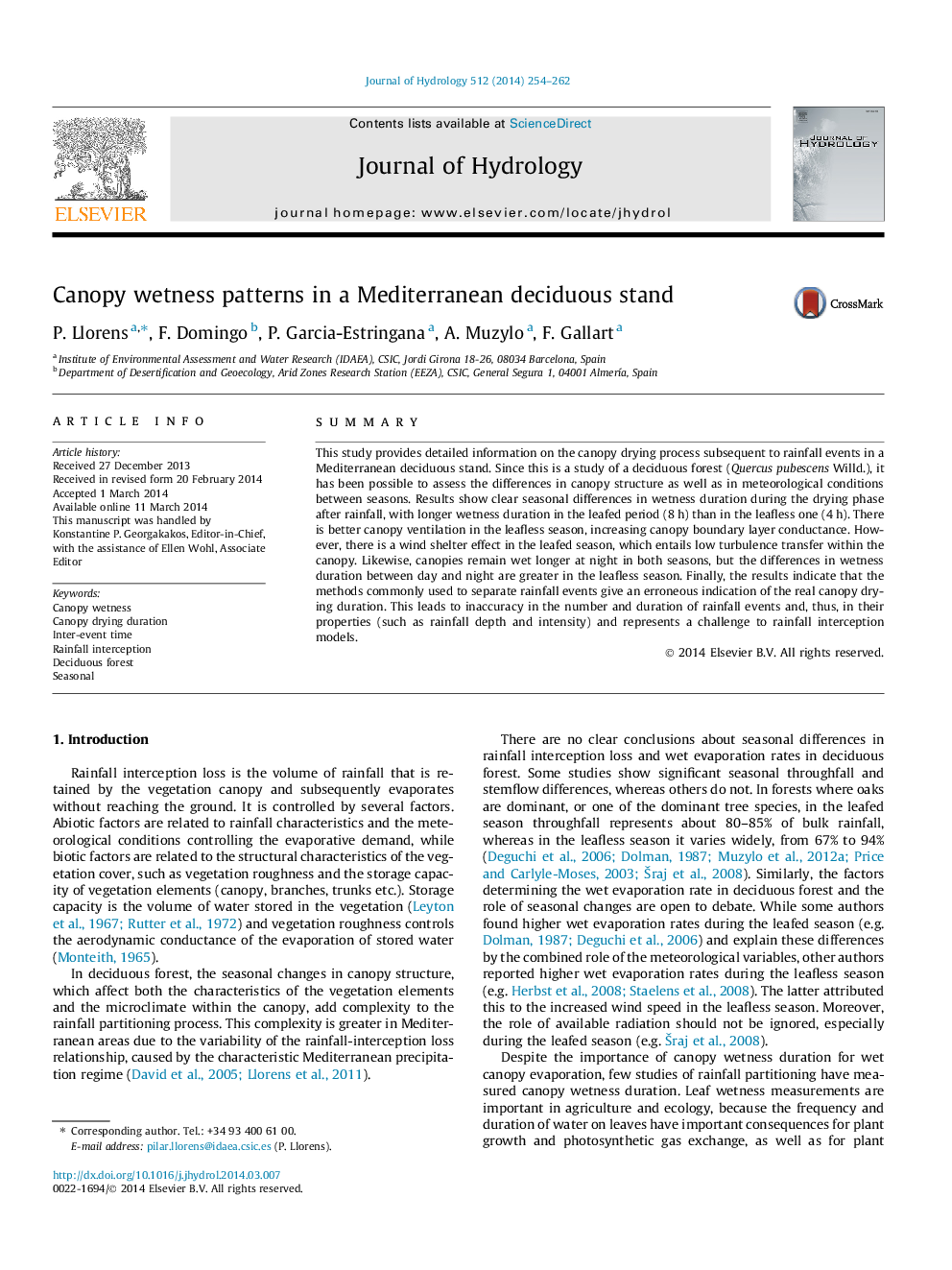| Article ID | Journal | Published Year | Pages | File Type |
|---|---|---|---|---|
| 6413138 | Journal of Hydrology | 2014 | 9 Pages |
â¢Canopy wetness duration in a Mediterranean deciduous forest stand is presented.â¢Noticeable seasonal and diel differences in wetness duration were identified.â¢Current methods for separating rainfall events fail to define real canopy drying duration.â¢Findings raise a challenge to interception models that assume a completely dry canopy between events.
SummaryThis study provides detailed information on the canopy drying process subsequent to rainfall events in a Mediterranean deciduous stand. Since this is a study of a deciduous forest (Quercus pubescens Willd.), it has been possible to assess the differences in canopy structure as well as in meteorological conditions between seasons. Results show clear seasonal differences in wetness duration during the drying phase after rainfall, with longer wetness duration in the leafed period (8Â h) than in the leafless one (4Â h). There is better canopy ventilation in the leafless season, increasing canopy boundary layer conductance. However, there is a wind shelter effect in the leafed season, which entails low turbulence transfer within the canopy. Likewise, canopies remain wet longer at night in both seasons, but the differences in wetness duration between day and night are greater in the leafless season. Finally, the results indicate that the methods commonly used to separate rainfall events give an erroneous indication of the real canopy drying duration. This leads to inaccuracy in the number and duration of rainfall events and, thus, in their properties (such as rainfall depth and intensity) and represents a challenge to rainfall interception models.
